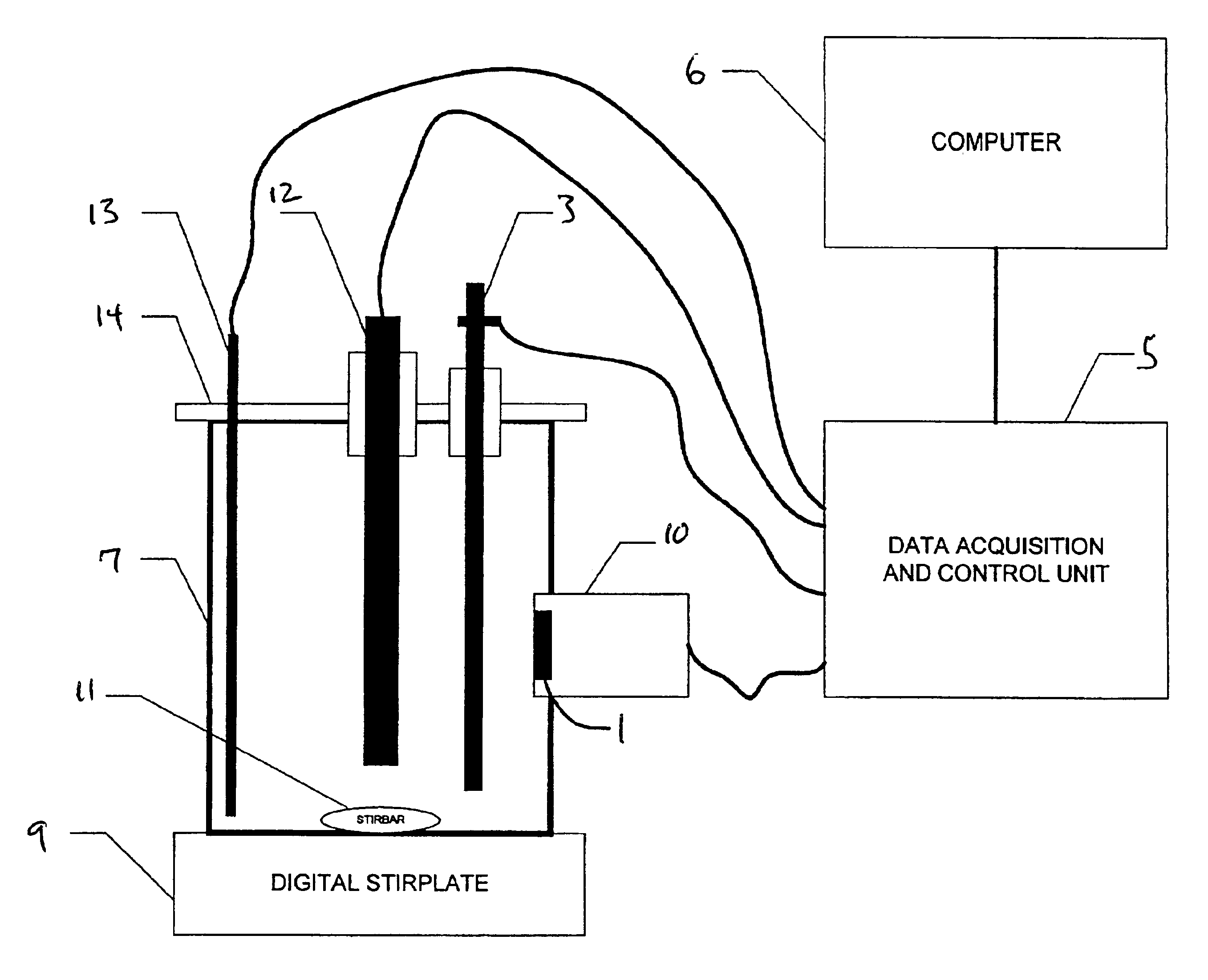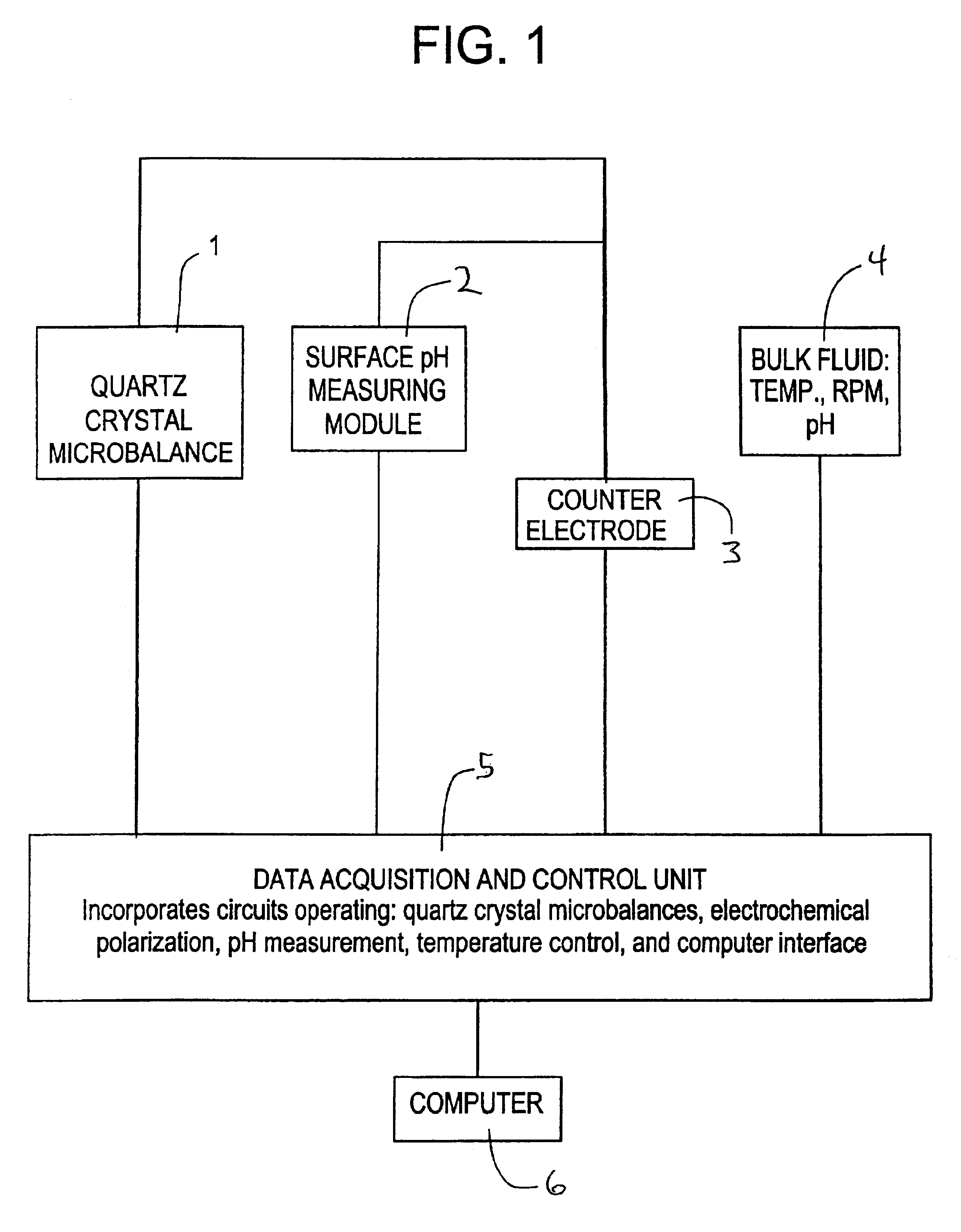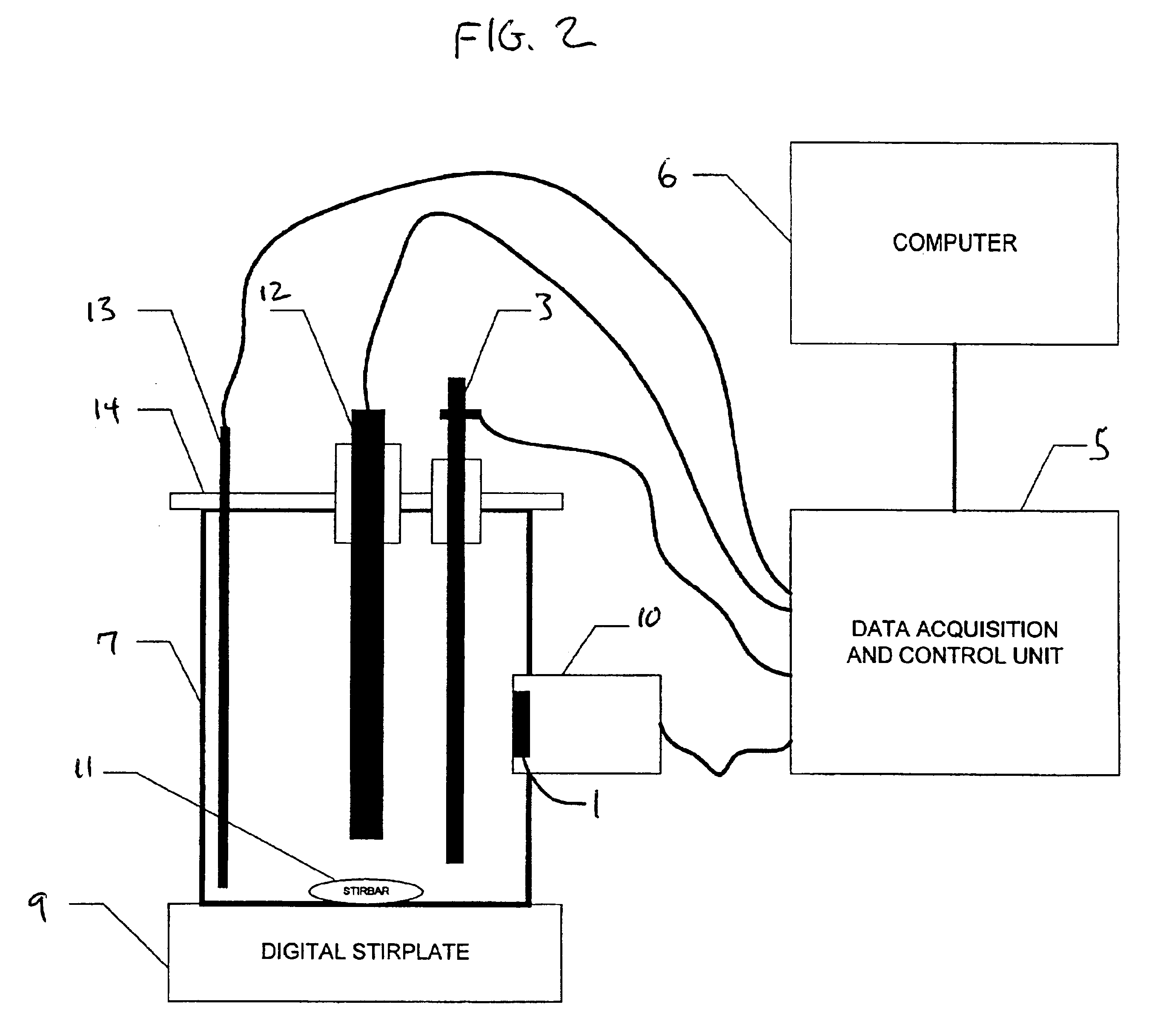Method and apparatus for measuring deposit forming capacity of fluids using an electrochemically controlled pH change in the fluid proximate to a piezoelectric microbalance
a piezoelectric microbalance and fluid ph change technology, applied in the direction of instruments, material electrochemical variables, testing food, etc., can solve the problems of preventing effective heat transfer, affecting fluid flow, and persistent problem of deposit formation
- Summary
- Abstract
- Description
- Claims
- Application Information
AI Technical Summary
Benefits of technology
Problems solved by technology
Method used
Image
Examples
example 1
Screening Of Calcium Oxalate Scale Inhibitors Using Model Solutions
[0081]A 1-mM (128-ppm) test solution of calcium oxalate is prepared as follows. Sodium oxalate (0.268 g) and calcium chloride dihydrate (0.294 g) are separately dissolved in 35 ml of 0.1 N HCl. The solutions are diluted to 100 ml each with deionized water, mixed under intense stirring, and the mixed solution is diluted to 2 L volume with deionized water with 0.1 N HCl added as needed to adjust the pH to 2.6. This solution is used as the control. The rest of the solutions contained a potential inhibitor. The results are given in Table 2.
[0082]
TABLE 2Results of inhibitor screening in model solution (1 mM calcium oxalate)TotaldepositedDeposition rate, mg / cm2 / hour atmass,%reference time periodsmg / cm2In-Test solutions10 min20 min30 min30 minhibitionControl, 1 mM0.380.450.430.15calciumoxalateA, 10 ppm0.100.140.180.0380.8activesA, 40 ppm0.080.080.100.00298.6activesB, 10 ppm0.220.360.440.1128.1activesC, 10 ppm0.130.170.180.0...
example 2
Dependence of Mass Accumulation of Calcium Oxalate Scale on the Applied Current Density Applied on Titanium Coated QCM
[0083]The results are given in Table 3. A 1-mM (128-ppm) test solution of calcium oxalate at bulk pH 2.4 is used in this test. After calcium oxalate is deposited on the surface of the QCM, the current is reversed (applied current density +2.0 mA / cm2). Rapid mass loss due to dissolution of calcium oxalate is observed, with no damage to the QCM.
[0084]
TABLE 3Results Of Calcium Oxalate Mass Accumulation from Model Solution onTitanium Coated QCM (1-mM calcium oxalate).Deposited mass, mcg / cm2Applied current density,at reference time periodsmA / cm25 min10 min15 min50.61.521.47.51.44.160.6112.58.1100.82225.8207.2
example 3
Screening of Calcium Oxalate Scale Inhibitors Under Acidic Conditions in Model Solutions
[0085]4-mM (128-ppm) supersaturated solutions of calcium oxalate at bulk pH 1.8 are used in this test. The inhibitors (20-ppm concentration based on the dry weight) are added prior to mixing equimolar calcium chloride and sodium oxalate solutions. An estimate obtained with a surface pH probe used consecutively indicates that the applied current of 22 mA / cm2 leads to a pH increase to 2.5-3.0. The results are given in Table 4.
[0086]
TABLE 4Results of inhibitor screening in model solution (4 mM calcium oxalate)Deposited mass, mcg / cm2at reference time periodsTest solutions10 min15 min20 minControl, 4 mM calcium oxalate105310A, 20 ppm actives65265C, 20 ppm actives102075D, 20 ppm actives1335100
PUM
| Property | Measurement | Unit |
|---|---|---|
| current densities | aaaaa | aaaaa |
| current density | aaaaa | aaaaa |
| current density | aaaaa | aaaaa |
Abstract
Description
Claims
Application Information
 Login to View More
Login to View More - R&D
- Intellectual Property
- Life Sciences
- Materials
- Tech Scout
- Unparalleled Data Quality
- Higher Quality Content
- 60% Fewer Hallucinations
Browse by: Latest US Patents, China's latest patents, Technical Efficacy Thesaurus, Application Domain, Technology Topic, Popular Technical Reports.
© 2025 PatSnap. All rights reserved.Legal|Privacy policy|Modern Slavery Act Transparency Statement|Sitemap|About US| Contact US: help@patsnap.com



